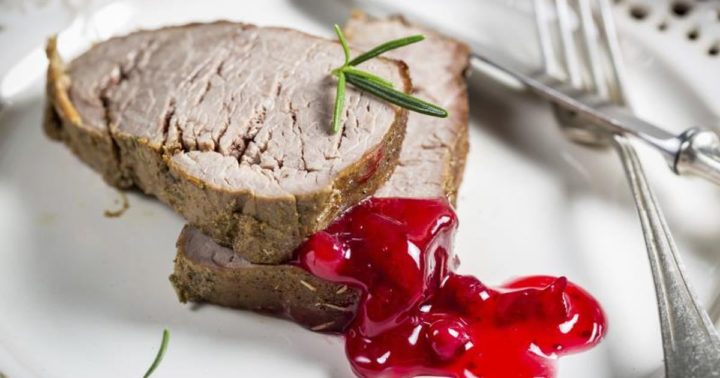The ball has dropped, champagne has flowed, New Year’s has just passed and an entire year awaits. For many of us, this means a change in our lives. Or, at the very least, an attempt at change in our lives. I’m of course talking about New Year’s resolutions. For at least a few fleeting moments of the next year our intentions are unspoiled.
As outdoorsman, fishermen and hunters, a resolution to hunt out west or take Grandpa on another fishing trip may top our respective lists. There’s nothing wrong with that. However, after the passing of 2015 I have realized something very alarming on social media sites like Facebook and Twitter – hunters are under attack. For this reason, this 2016 resolution may be the best bet to saving the future of hunting for generations to come.
I’m talking about eating more wild game. Not just smashing a handful of ground venison into a ball and tossing it onto an open flame. Not that there’s anything wrong with that. I’m talking about really diving, head first, into the cooking of game for yourself and the others who surround each of us. Teaching the world the pure ecstasy of partaking in everything that animal gave to us. Honoring each of us with its flesh. All the while, teaching the nutritional value of these animals to those who mock our autumn passion.
It’s simple, eat more wild game in 2016. Teach it to your families and spread the word. Hunting is about the meat, which is the real trophy we hunters seek.
Lower in fats – Better for your Heart and Hands
When LiveStrong.Com compared round steaks, a 3-ounce beef cut contained 138 calories, 25.6 grams of protein and 3.2 grams of fat (1.3 grams of that is saturated fat). The same sized venison cut had 129 calories, 26.8 grams of protein and 1.6 grams of fat (only 0.9 grams of saturated fat). Because consuming saturated fat can increase your cholesterol levels, a person risks a higher likelihood for heart disease when consuming more beef.
Wild game consume more nuts, grasses and plants than their barnyard cousins, so they contain higher levels of omega-3 fatty acids. A report published by Harvard T.H. School of Public Health concluded that people with high levels of omega 3s in their diet are half as likely to experience a heart attack. Of course, include a freshly caught fish in your diet and the odds get even better for a healthy heart. But chew on this, wild game meat contains a type of omega 3 commonly found in salmon and tuna and other fish oils. Scientists believe this type of fatty acid helps prevent atherosclerosis, the most common cause of heart attack and stroke.
Commercial animals like cows and chickens are fed corn and grain. Grain is an inflammatory. In the human body, consuming an inflammatory can lead to obesity, diabetes, cancer and rheumatoid arthritis.
Ditch the Supplements – You eat Wild Game
Wild game consume a much richer diet than a wood or metal enclosure can provide. These diets include nuts, seeds, insects and plants. Because of this, the table fare you bring from the woods has nearly double the antioxidants and much greater amounts of iron, zinc and B vitamins. Taking a pill every morning makes little sense when you’re eating this ancestral diet.
Get Sick less – Respond better to Antibiotics
Salmonella is an intestinal tract bacteria that exists when our food is contaminated with feces. Caged birds eat their own feces. When was the last time you saw a wild duck do the same? Ditch the chicken breast and start hunting more waterfowl.
Commercial meats are given antibiotics. These animals sometimes contain antibiotic-resistant bacteria before they’re brought to your favorite butcher chain. A failure by the consumer to cook the meat to FDA regulation can cause the bacteria the ability to pass to you or your loved ones. The result may be a sickness that is incurable by antibiotics.
Food allergies can be caused by reactions to enzymes and additives found in commercial meat. Sometimes food coloring is added to these meats for better counter presentation. Everything these animals ingest gets ingested by the consumer. The only additive found in wild game is the memorable experience you gained before you took it.
Hormones in commercial meat have a bad reputation, often surrounded in controversy. Studies are being done on a continual basis regarding these hormones and their relationship to human cancers. According to the Montana State University Cooperative Extension, only minute levels of growth hormone are present in hormone-supplemented cattle. The Extension Service reports that, on average, 1.85 nanograms of growth hormone are detected in hormone-supplemented beef per 3-ounce serving, compared to 1.3 nanograms in non-hormone-supplemented beef. This represents a 42 percent increase, which was enough to cause the European Union to ban imports of U.S. beef, for purposes of protecting human health.
The images we see on Facebook of our best buddy’s buddy sitting behind a trophy bull, buck or tom sure are fun to look at. But, let’s change the face of hunting. Let’s share more pictures, recipes and gatherings at the table. Flood the walls of social media with this and I promise you anti-hunters will have a much smaller soap box to stand on. Eat more wild game in 2016 and live healthier.








